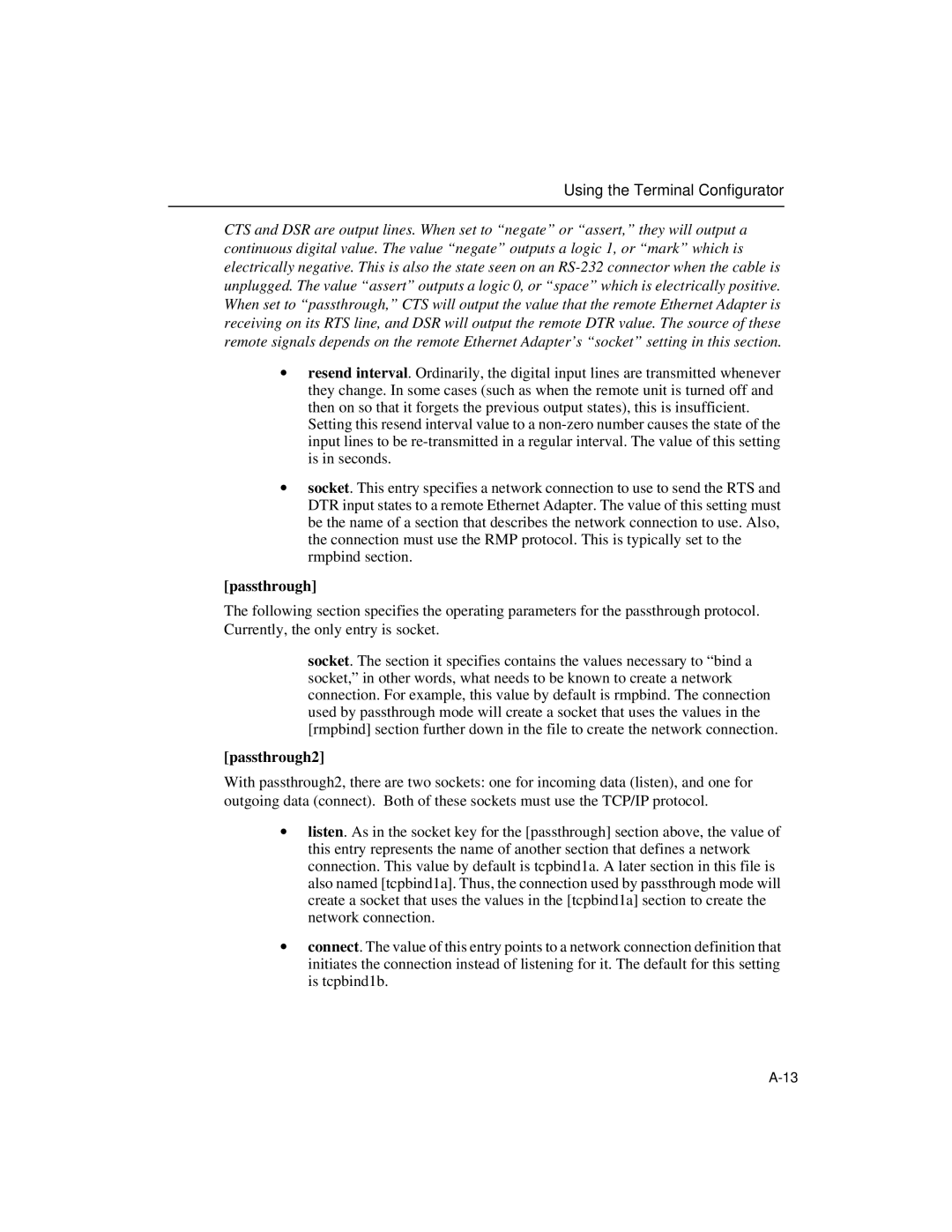Using the Terminal Configurator
CTS and DSR are output lines. When set to “negate” or “assert,” they will output a continuous digital value. The value “negate” outputs a logic 1, or “mark” which is electrically negative. This is also the state seen on an
∙resend interval. Ordinarily, the digital input lines are transmitted whenever they change. In some cases (such as when the remote unit is turned off and then on so that it forgets the previous output states), this is insufficient. Setting this resend interval value to a
∙socket. This entry specifies a network connection to use to send the RTS and DTR input states to a remote Ethernet Adapter. The value of this setting must be the name of a section that describes the network connection to use. Also, the connection must use the RMP protocol. This is typically set to the rmpbind section.
[passthrough]
The following section specifies the operating parameters for the passthrough protocol. Currently, the only entry is socket.
socket. The section it specifies contains the values necessary to “bind a socket,” in other words, what needs to be known to create a network connection. For example, this value by default is rmpbind. The connection used by passthrough mode will create a socket that uses the values in the [rmpbind] section further down in the file to create the network connection.
[passthrough2]
With passthrough2, there are two sockets: one for incoming data (listen), and one for outgoing data (connect). Both of these sockets must use the TCP/IP protocol.
∙listen. As in the socket key for the [passthrough] section above, the value of this entry represents the name of another section that defines a network connection. This value by default is tcpbind1a. A later section in this file is also named [tcpbind1a]. Thus, the connection used by passthrough mode will create a socket that uses the values in the [tcpbind1a] section to create the network connection.
∙connect. The value of this entry points to a network connection definition that initiates the connection instead of listening for it. The default for this setting is tcpbind1b.
